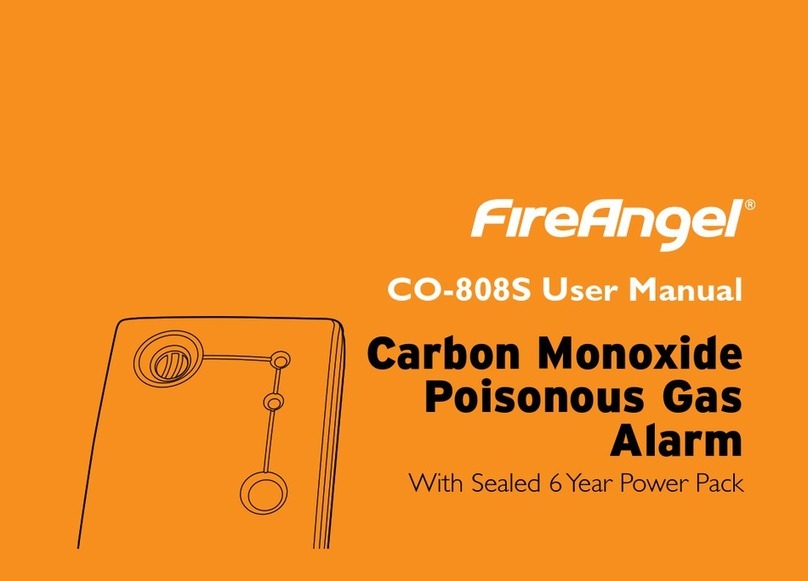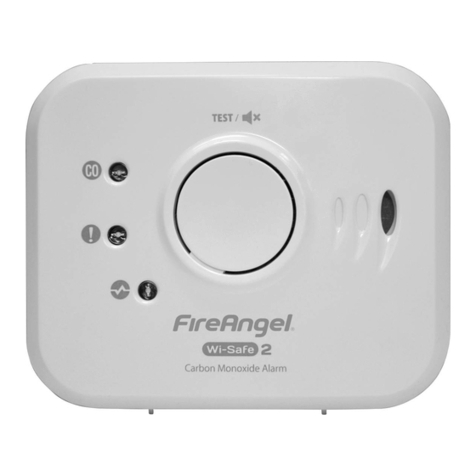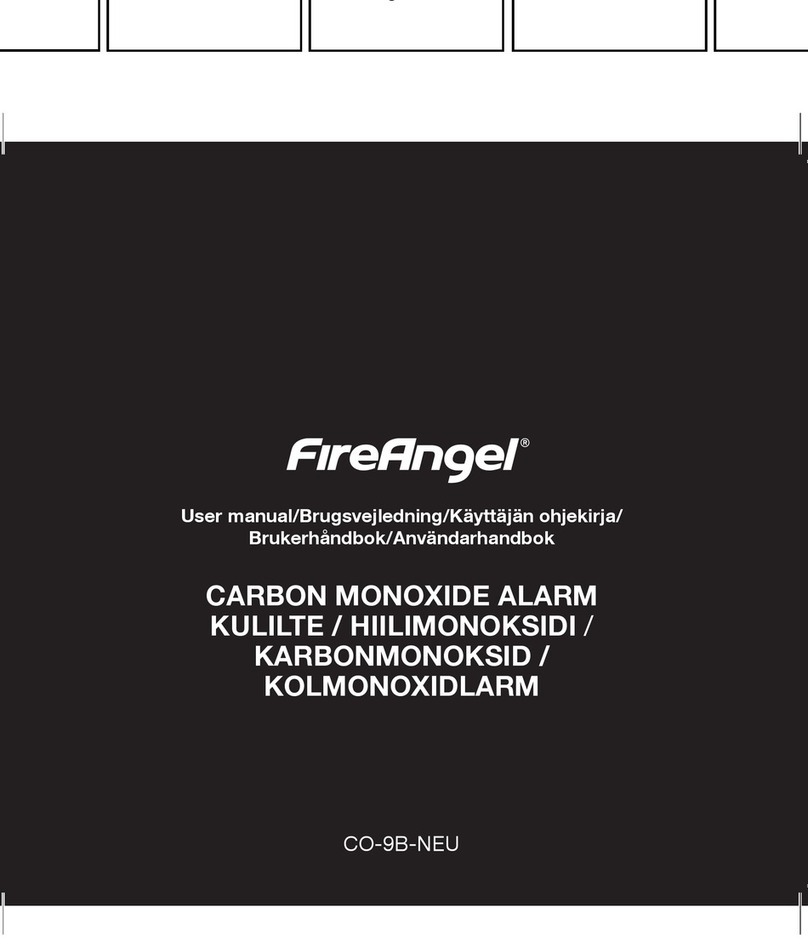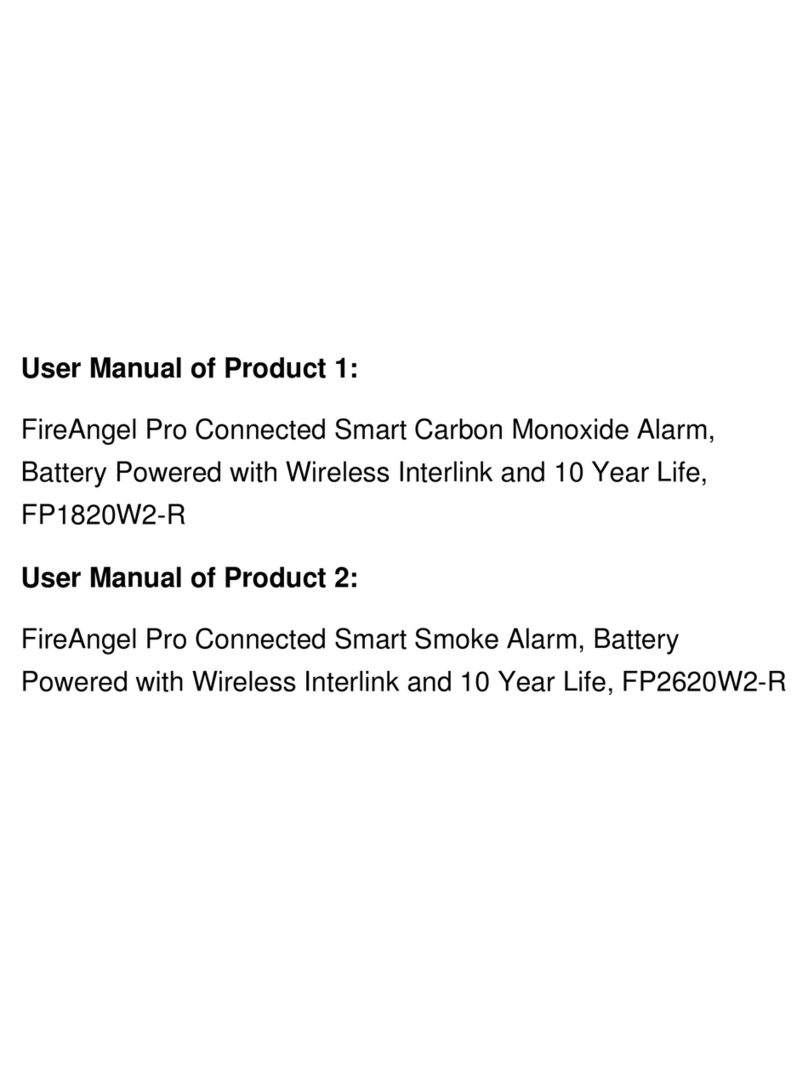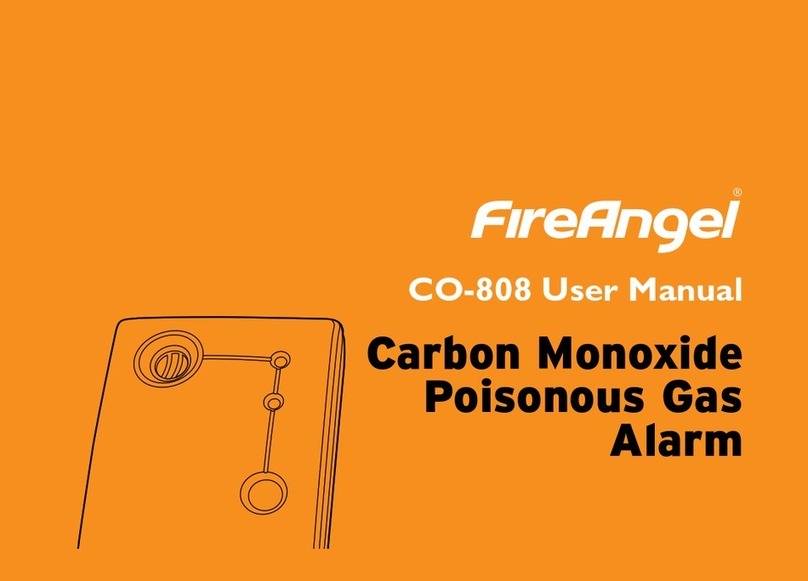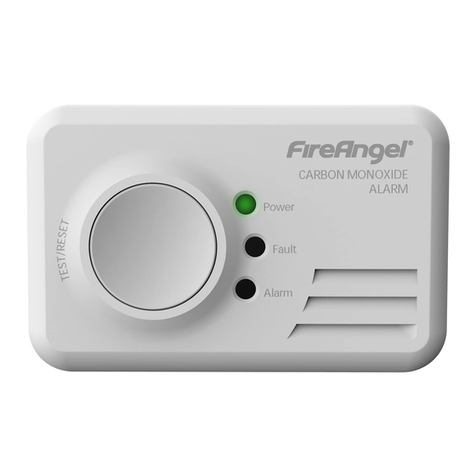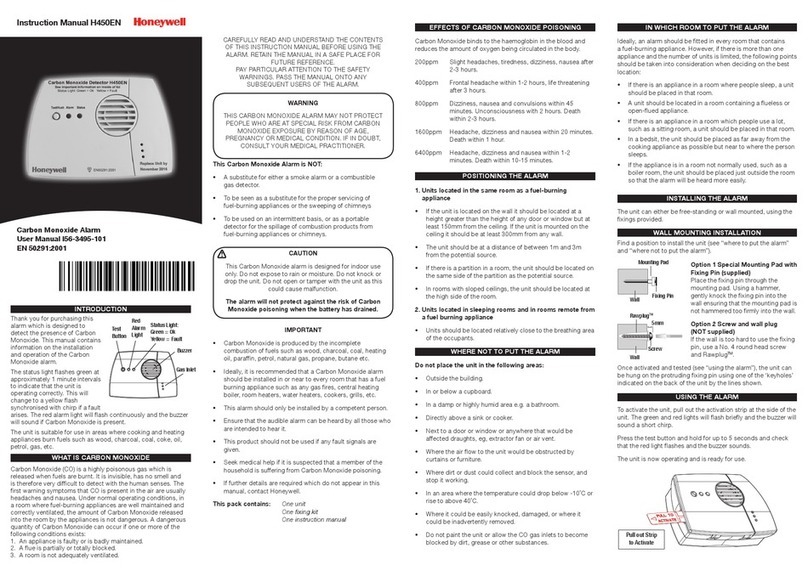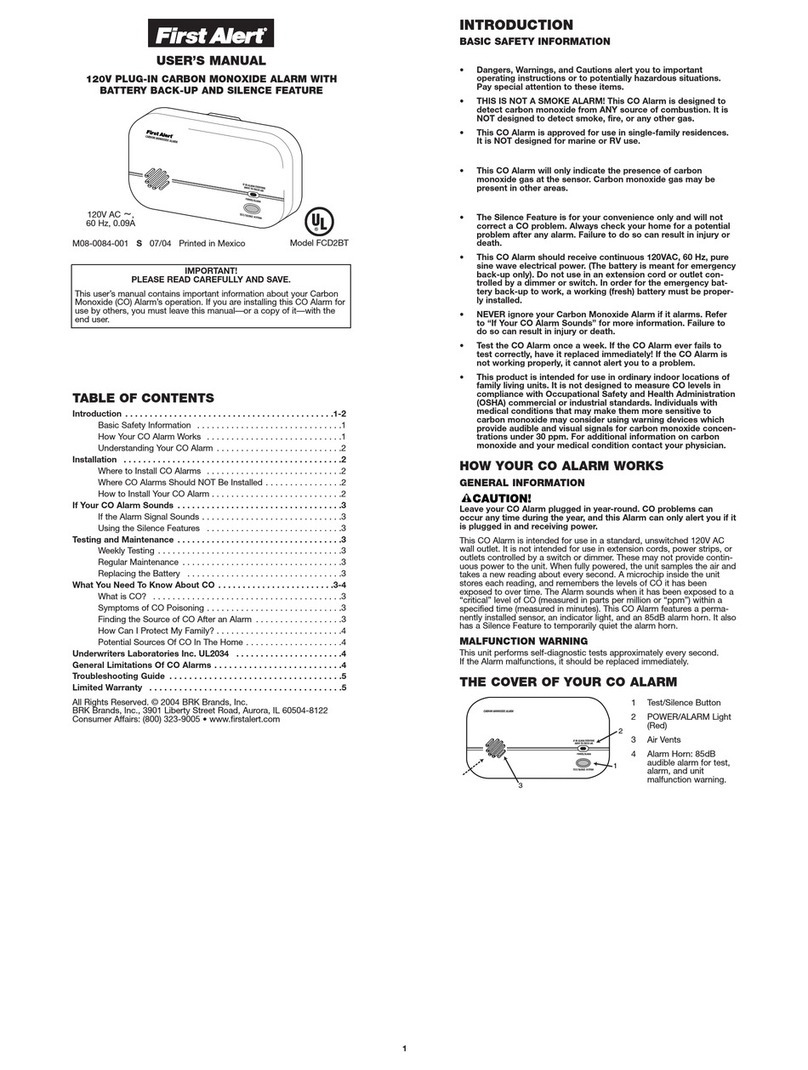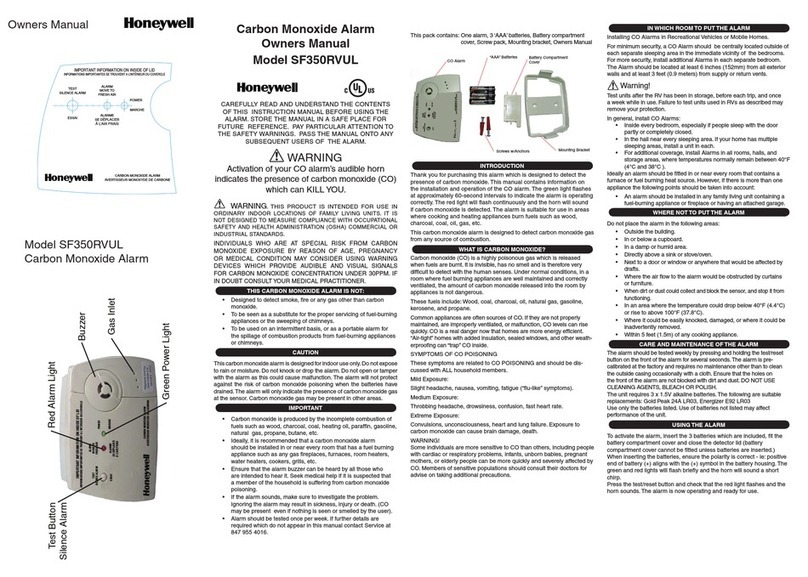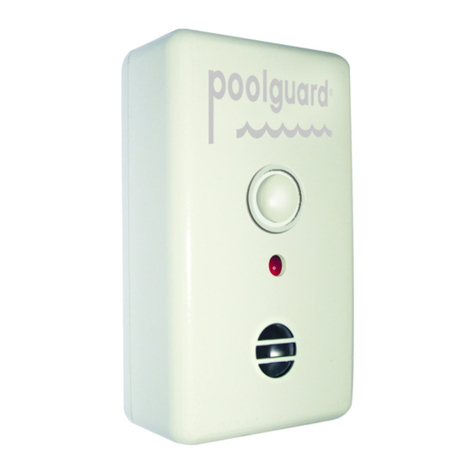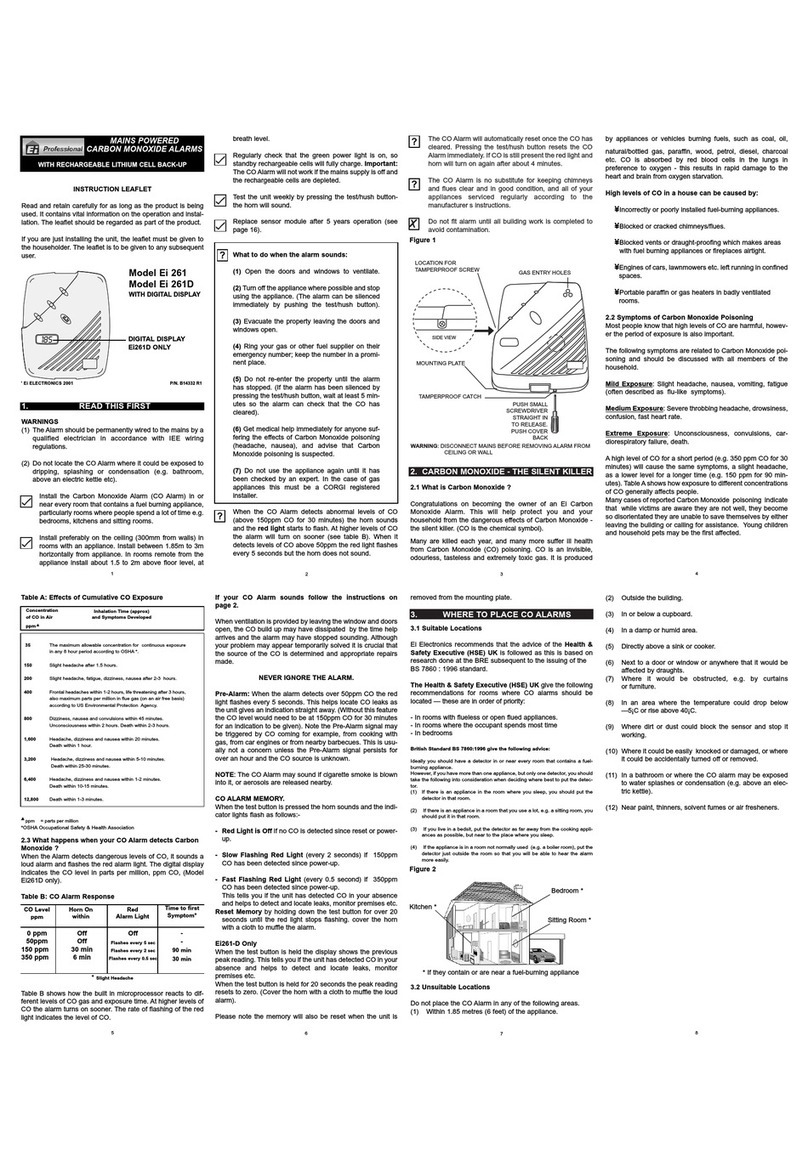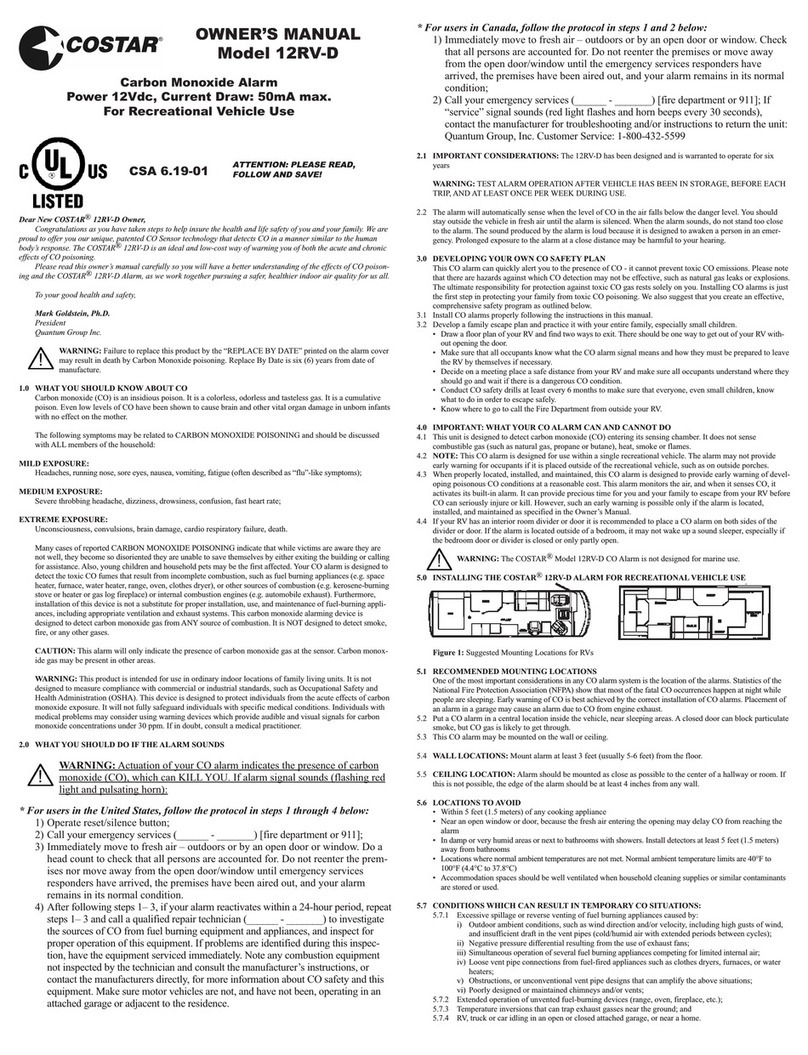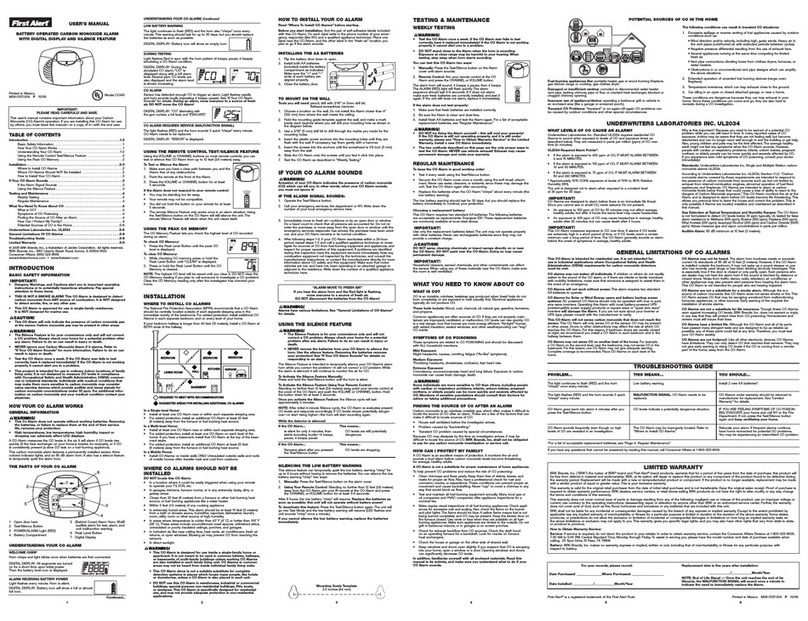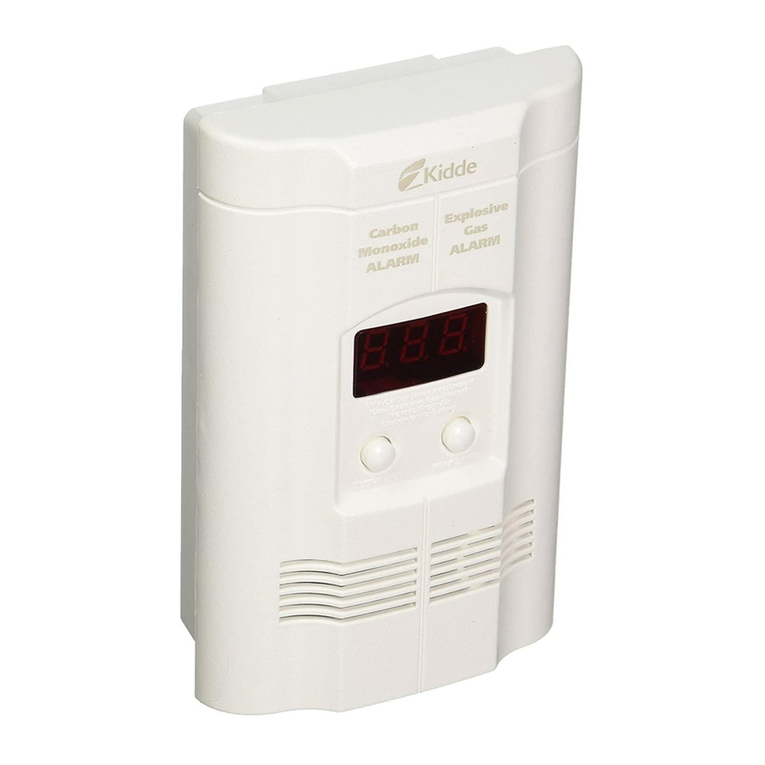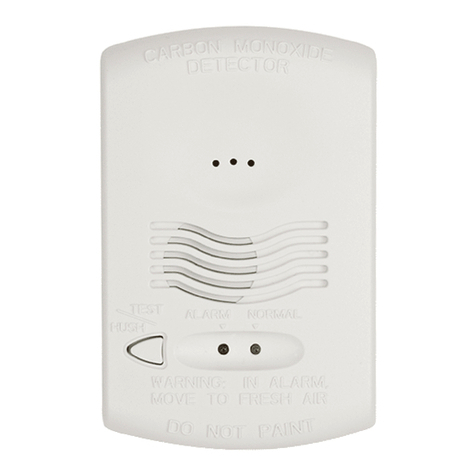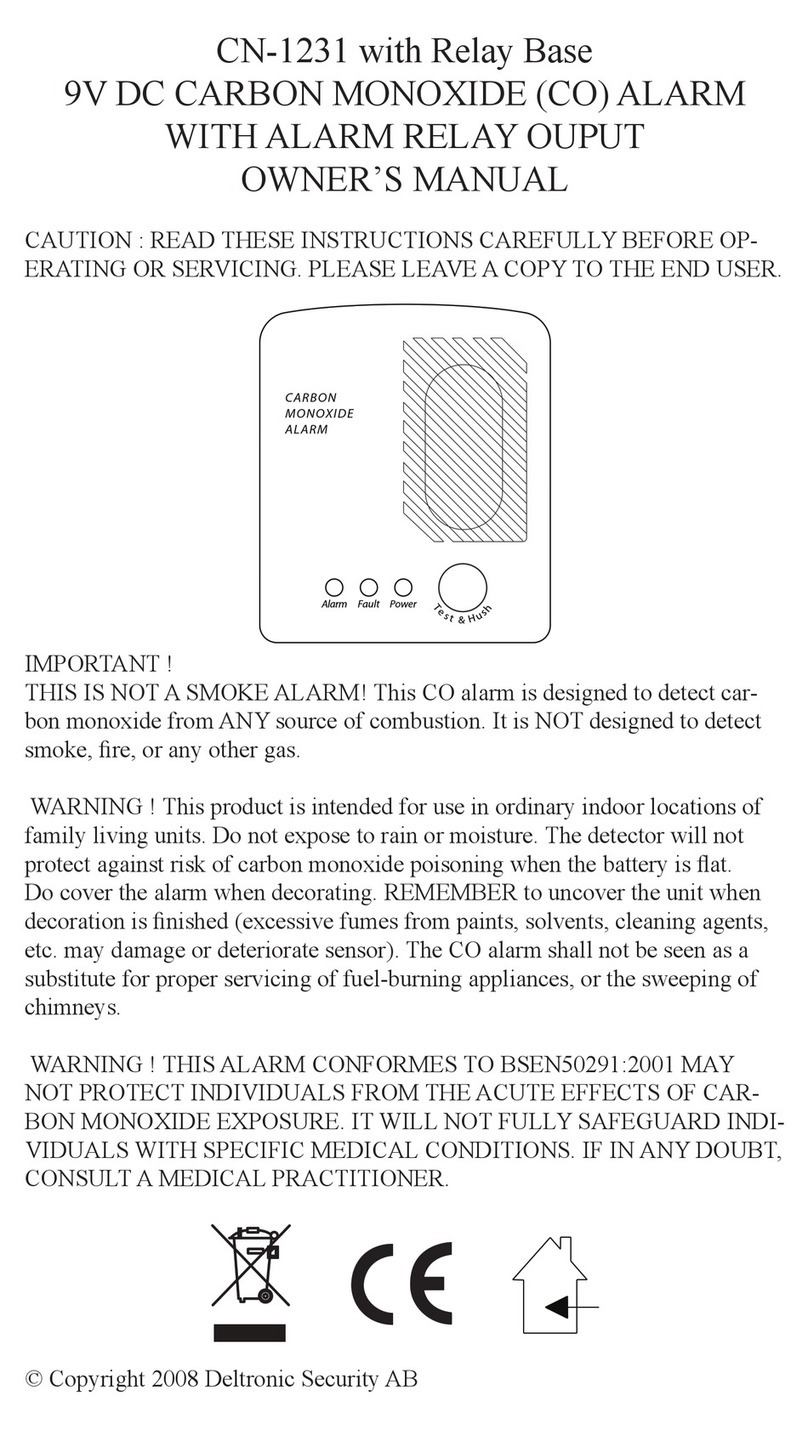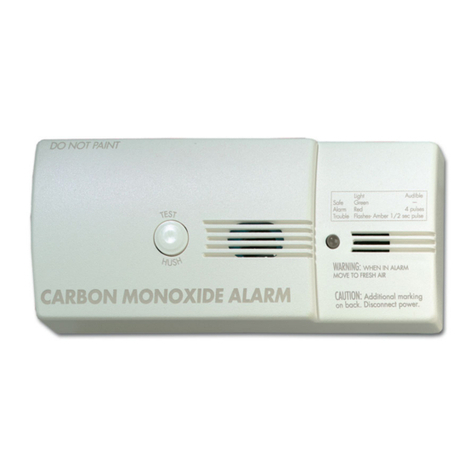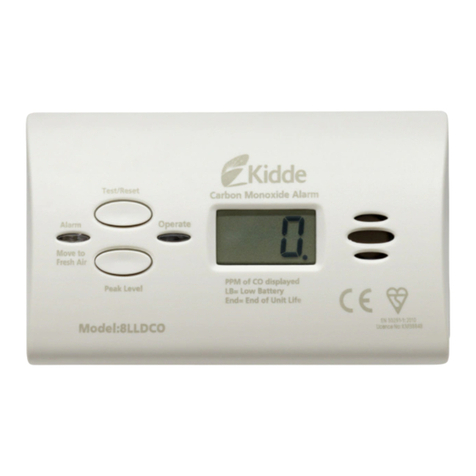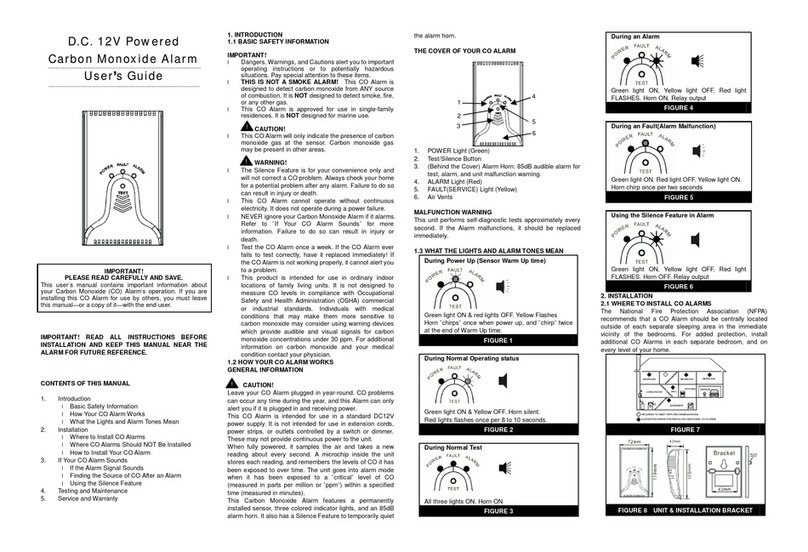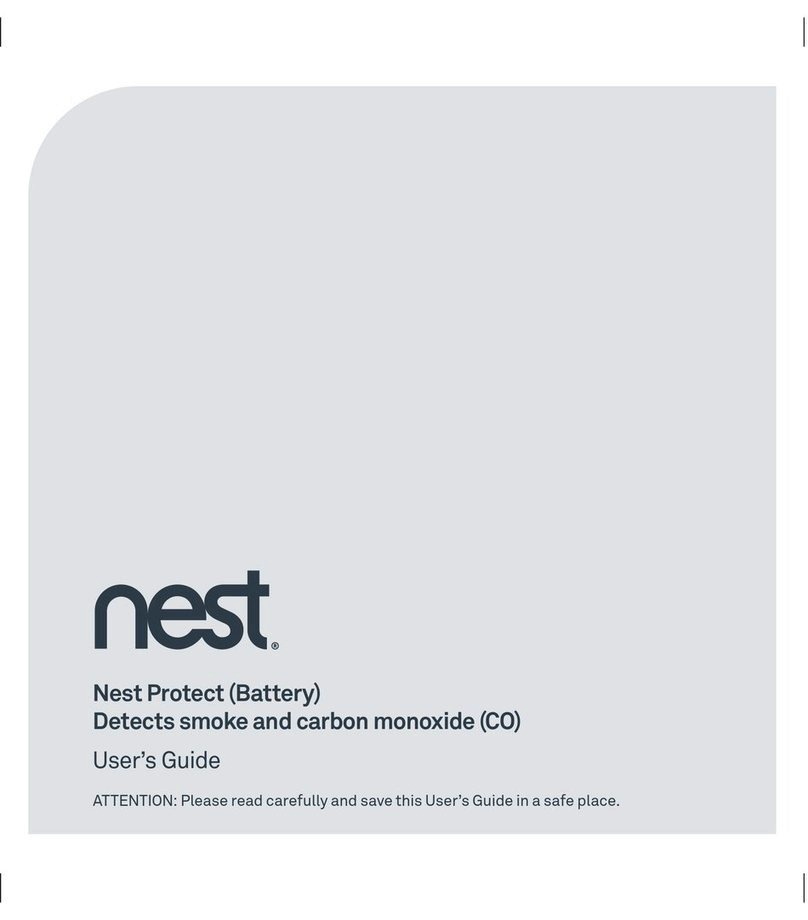3
CARBON MONOXIDE
AND HOW IT CAN
AFFECT YOU AND
YOUR FAMILY
Carbon monoxide is a poisonous gas that
kills hundreds of people each year and
injures many more. It is often referred to
as the silent killer, it has no odour or taste
and cannot be seen. Like oxygen, CO enters
the body through the lungs during the
normal breathing process. It competes with
oxygen by replacing it in the red blood cells,
thereby reducing the ow of oxygen to the
heart, brain and other vital organs. In high
concentrations, CO can kill in minutes.
Many cases of reported carbon monoxide
poisoning indicate that while victims
are aware they are not feeling well, they
become disorientated and unable to save
themselves by either exiting the building or
calling for assistance. Exposure during sleep
is particularly dangerous because the victim
usually does not wake up.
SymptomsofCOpoisoning
The following symptoms may be related to
CO poisoning which all household members
should be made aware of:
• Mild Exposure: Slight headache, nausea,
vomiting, fatigue (often described as ‘u-
like’ symptoms)
• Medium Exposure: Severe throbbing
headache, drowsiness, confusion, fast
heart rate
• Extreme Exposure: Unconsciousness,
convulsions, cardiorespiratory failure,
death
Your FireAngel CO detector monitors the
level of CO as parts per million (ppm) in the
atmosphere surrounding the detector.
35ppm The maximum allowable
concentration for continuous
exposure for healthy adults
in any 8 hour period, as
recommended by the
Occupational Safety and Health
Administration (OSHA).
200ppm Slight headache, fatigue,
dizziness, nausea after 2 - 3
hours.
400ppm Frontal headaches within 1 - 2
hours, life threatening after 3
hours.
800ppm Dizziness, nausea and
convulsions within 45 minutes.
Unconsciousness within 2 hours.
Death within 2 - 3 hours.
Should you suspect CO may be aecting you
or your family, open the doors and windows
of your property to ventilate, turn o your
appliances and evacuate the premises.
At this time the authorities should be
contacted to locate the source of the carbon
monoxide before re-entering the building.
Medical attention should be sought for
anyone suering the eects of CO poisoning
(headache, nausea, see page 3).

